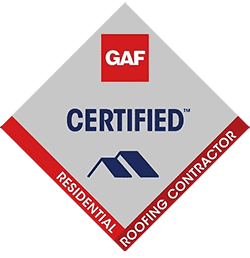3 Tips for Assessing Commercial Flat Roof Damage!
Maintaining the integrity of a commercial flat roof is essential for the longevity and safety of any building.
Neglecting roof damage can lead to severe and costly consequences, particularly in regions with unpredictable and extreme weather patterns such as Beaumont and Port Arthur Texas.
While cost-effective and efficient, flat roofs require consistent attention and care, including any necessary roof repair, to ensure reliable protection for years to come.
This article delves into the critical aspects of assessing flat roof damage and offers actionable tips to help business owners secure their properties with flat roof repair.
Understanding Flat Roofs
Flat roofs are a popular choice for commercial buildings due to their affordability, ease of installation, and accessibility for maintenance or necessary roof repair.
These roofs are typically constructed with materials like modified bitumen, EPDM rubber, or thermoplastic polyolefin (TPO).
Each material is chosen for its durability and ability to withstand various environmental conditions.
Yet flat roofs come with unique challenges, such as water pooling, membrane damage, and susceptibility to leaks.
Understanding these vulnerabilities is the first step toward effective maintenance to avoid the need for roofer repair services.
Common Issues Affecting Flat Roofs
Tip 1 - Conduct Regular Inspections
Regular roof inspections are pivotal in identifying potential issues before they escalate into costly roof repairs.
In the humid climate of Beaumont and Port Arthur, it is advisable to schedule inspections at least twice a year, ideally in spring and fall, and after significant weather events such as storms or hurricanes.
During these inspections, look for:
By catching these issues early, you can seek roofer repair services before they lead to more severe damage, saving time and money in the long run.
Tip 2 - Address Water Pooling Issues Promptly
Water pooling, also referred to as ponding, is one of the most common and severe problems affecting flat roofs.
Prolonged exposure to standing water can weaken the roof structure and increase the likelihood of leaks and the need for flat roof repair technicians.
During inspections, pay special attention to low spots where water might accumulate.
Addressing this issue promptly is crucial:
If water pooling persists, consult a professional flat roof repair technician to evaluate the underlying cause and recommend long-term solutions.
Tip 3 - Evaluate the Roof Membrane Condition
The roofing membrane is the primary barrier between your building and the elements and regularly assessing its condition is essential to maintaining its effectiveness.
Under the intense sunlight and temperature fluctuations in Texas, membranes are particularly vulnerable to wear.
During inspections:
If any issues are detected, engage a professional roof repair contractor in Beaumont or Port Arthur to perform necessary repairs.
Timely intervention can prevent minor problems from evolving into extensive damage that requires a complete flat roof replacement.
Benefits of Professional Roofer Repair Services
While some maintenance tasks can be handled in-house, professional roofer repair services offer numerous advantages.
Roofing experts bring specialized tools, technical knowledge, and experience to deal with the unique challenges posed by the local climate.
Professional flat roof repair services can:
In Beaumont and Port Arthur where weather conditions can be harsh, investing in professional flat roof repair services is a proactive step that can save businesses from costly disruptions and repairs.
Conclusion
Proactive maintenance and regular assessments are essential to extending the life of a commercial flat roof.
By scheduling routine inspections, promptly addressing water pooling issues, and evaluating the condition of the roof membrane, businesses in Beaumont and Port Arthur can protect their investments and avoid potential disruptions caused by roof damage.
Additionally, partnering with professional flat roofer repair services makes certain that minor issues are resolved before they escalate into costly repairs or replacements.
Key Takeaways
FAQs
1. How often should I inspect my commercial flat roof?
Ideally, inspections should be conducted twice yearly, preferably in the spring and fall.
2. What are common signs of flat roof damage?
Look for pooling water, cracks, blisters, and damaged flashings.
3. Why is pooling water a concern?
Pooling water can weaken the roofing structure, leading to leaks and further damage.
4. What should I do about a torn roofing membrane?
Consult with a roof repair expert to decide between repair and replacement based on the extent of the damage.
5. How can I ensure proper drainage on my roof?
Keep drain systems clean and consider additional drains or slope adjustments if pooling persists.
6. Why are flashings essential for flat roofs?
Flashings prevent water ingress, a critical factor in maintaining roof health.
7. When should I hire professional roofer repair services?
Engage professionals for thorough inspections and when significant roof repair work is necessary.
8. What environmental factors affect flat roofs in Texas?
Heat, wind, and heavy rainfall can all impact flat roofs.
9. Can damaged flat roofs lead to higher energy costs?
Yes, compromised insulation from roof damage can increase heating and cooling expenses.
10. How can I extend the life of my flat roof?
Regular maintenance, prompt flat roof repairs, and professional inspections are key to longevity.
- Water Pooling or Ponding - ;By design, flat roofs have minimal slopes, making them prone to water accumulation in low spots. If left unaddressed without seeking flat roof repair services, this can lead to leaks and structural damage.
- Membrane Deterioration - Over time, exposure to the sun’s UV rays, high temperatures, and physical wear can cause the roofing membrane to blister, crack, or tear, compromising the roof’s ability to act as a weather barrier.
- Drainage Problems - Blocked or inadequate drainage systems exacerbate water pooling and can lead to significant issues during heavy rain and the need to seek local roofer repair services.
- Structural Wear and Tear - The constant expansion and contraction caused by temperature changes can weaken the structural components of the roof.
- Visible cracks or punctures in the roofing material.
- Pooling water in low areas.
- Signs of membrane deterioration, such as blisters or ridges.
- Clogged or damaged drainage systems.
- Clean Drainage Systems - To allow proper water flow, ensure all gutters, downspouts, and internal drains are free of debris.
- Level the Low Spots - In some cases, low areas may need to be built up or reinforced by roofer repair services to improve water drainage.
- Install Tapered Insulation - Tapered insulation can create a slight slope, directing water toward drainage points.
- Look for blisters, ridges, or punctures that may indicate damage.
- Check for areas where the membrane appears loose or detached.
- Inspect seams and edges for signs of separation or weakening.
- Perform thorough inspections to identify hidden problems.
- Provide tailored solutions based on the specific roofing material and condition.
- Ensure compliance with local building codes and regulations.
- Extend the life of your flat roof through high-quality repairs and maintenance.
- Schedule Regular Inspections - To catch potential issues early to avoid a need for flat roof repair, inspect your flat roof at least twice yearly and after major weather events.
- Address Water Pooling Promptly - Clear drainage systems and resolve low spots to prevent structural damage.
- Monitor the Roof Membrane - Check it regularly for signs of wear, such as blisters, ridges, or punctures.
- Hire Professional Roof Repair Specialists - Leverage the expertise of local professionals to ensure high-quality maintenance and repairs.
Subscribe to High & Tight Roofing's Blog



Comments